It is not just about aesthetics, but is rather a crucial factor in providing proper conditions for the fish to thrive. This is one of the toughest challenges that aquarists have always struggled to solve in their aquariums, particularly the green water that originates from an algae bloom. It obscures the water in your tank and complicates the cleaning process.
Content Table
If you keep the fish in an aquarium or any water body, then a UV water filter can be your tool for killing green water and keeping the water healthy for the inhabitants. This article aims to discuss how UV filter pumps work, discuss their efficiency, explain what situations they are best suited for, and discuss the role of UV pumps in combating algae in an aquarium.
What is a UV Filter Pump?
UV filter pump is equipment that is employed for purifying water in the aquarium through the application of ultraviolet light. This design is meant to disinfect water by destroying algae, bacteria, and parasites, mainly by degrading their DNA as water passes through the UV light chamber.
The UV filter pump typically consists of the following components:
- UV Bulb: This bulb emits UV-C light, which neutralizes harmful microorganisms.
- Pump Motor: Moves water through the filtration system and the UV chamber.
- Filter Media: Mechanical or chemical filtration to trap debris and absorb toxins.
- Quartz Tube and Waterproof Seal: Protect the UV light while allowing efficient sterilization.
One good example of the above system is the hygger 032 UV Filter Pump. This one product performs four functions of mechanical filtration, UV sanitation, oxygen infusion, and water aeration, thus very useful. It is suitable to be used in freshwater tanks of up to 80 gallons and should not be used in saltwater tanks.
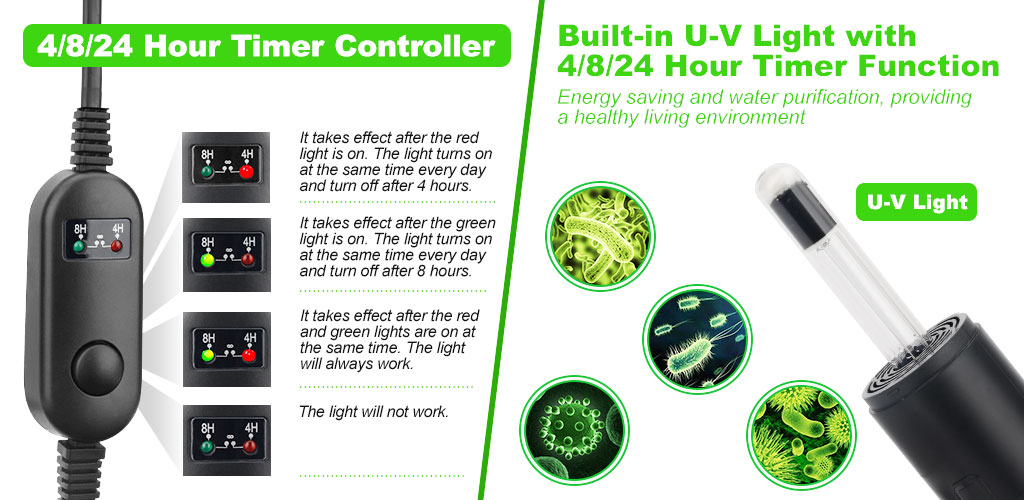
UV water filter
Do UV Water Filters Work?
Of course, UV water filters indeed work – and rather well for that matter. UV water filter is a useful aquarium product if you have ever used water with a green color, cloudy water, or constant algae formation. These filters do not filter out the algae, but rather they provide a solution through dead green water, whereby free-floating algae and waterborne pathogens’ microorganisms are rendered inactive.
Here’s what a UV water filter can do:
- Kill Green Water: Destroys algae suspended in the water, making your tank visibly clearer.
- Control Harmful Bacteria: Reduces the risk of infections by killing bacteria and parasites.
- Enhance Water Quality: Helps stabilize the water parameters by preventing rapid algae growth.
However, it’s worth noting that UV filters don’t clean solid waste or replace the need for regular tank maintenance. They are most effective when used alongside mechanical and biological filtration systems.
How Efficient is a UV Water Filter?
The efficiency of a UV water filter depends on several factors:
- Flow Rate: A slower flow allows more exposure time to UV light, enhancing sterilization.
- UV Bulb Strength: More wattage means a stronger UV light capable of killing more microorganisms.
- Tank Size and Setup: Larger tanks may require higher-capacity UV filters for optimal results.
The hygger 032 UV Water Filter is equipped with an 8-watt UV bulb and can handle tanks up to 80 gallons. It comes with a 6-watt ultra-quiet water pump that ensures stable water flow and minimal noise. With this device, many aquarists report clearer water within 3 to 7 days of continuous use.
It’s smart UV timer allows customization—4-hour, 8-hour, or 24-hour modes—making it easier to manage algae control without overexposing the tank to UV rays. With a lifespan of up to 8000 hours, this filter pump is both durable and efficient.
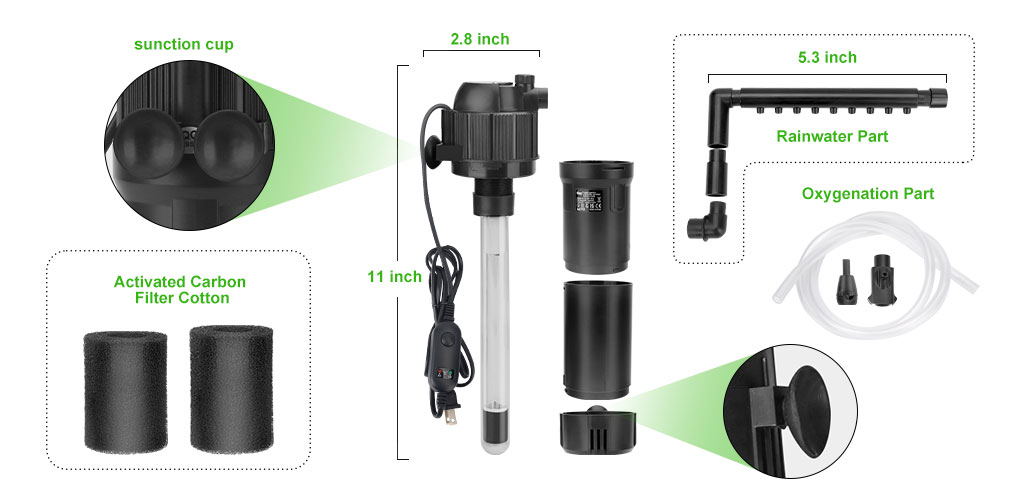
kill green water
When Do We Need the UV Water Filter?
You should consider using a UV water filter when:
- The tank has green water: If the water has turned green and cloudy due to algae blooms, UV filtration can resolve the problem quickly.
- You notice recurring fish diseases: UV filters kill free-floating bacteria and parasites that may be causing illness.
- There’s excessive organic waste: High waste levels increase nutrient availability for algae; UV filtration can curb the resulting blooms.
- Your tank is exposed to sunlight: Tanks near windows often suffer from frequent algae issues. UV filters can counteract this.
In essence, whenever your tank’s visual clarity drops or fish health declines due to waterborne pathogens, a UV water filter becomes a vital tool.
Controlling Green Water in a Tank
To kill green water in your aquarium using a UV water filter, follow these steps:
Step 1: Choose the Right Filter
Install a UV filter like the hygger032, which offers targeted green water control through customizable UV exposure.
Step 2: Set the UV Mode
Use the appropriate mode based on the tank’s condition:
- 4-Hour Mode (Red Light): For routine maintenance, turn it on once every 3–5 days.
- 8-Hour Mode (Green Light): For moderate algae problems, turn it on once every 1-2 days or run continuously for 3–7 days.
- 24-Hour Mode (Red + Green Light): For severe green water outbreaks, run continuously for 3–7 days.
Step 3: Monitor the Water
Run the UV light for 3–4 hours per day for about 3–5 days until water clarity improves. After that, reduce usage to 1 hour every 2 to 3 days to maintain clarity.
Step 4: Don’t Overuse
Avoid running the UV filter constantly, as overexposure may harm beneficial bacteria in your filter media. The enclosed UV chamber in models protects helpful bacteria by only targeting the water column.
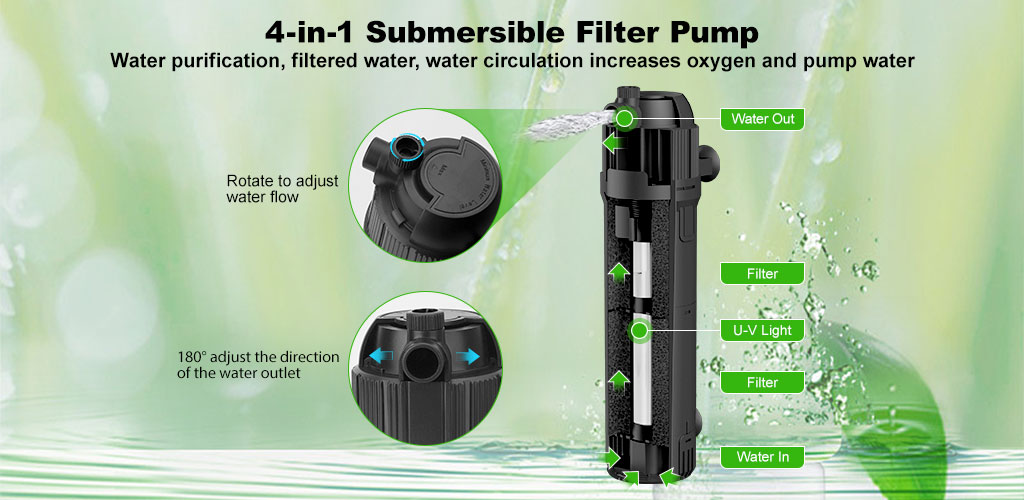
HG032
Aquarium UV Light Usage Advice
For best results when using a UV water filter in your aquarium, consider these tips:
Where to Place the UV Filter Pump
- Place the filter near the middle or bottom of the tank where water circulation is strongest.
- Ensure unobstructed flow through the intake to maximize the sterilization process.
- Use the suction cups provided to secure the pump firmly against the tank wall.
How to Use the hygger 032 UV Light Filter Properly
- Adjust the nozzle direction using the 180° rotatable outlet to control the water current.
- Make use of the timer controller to match your tank’s needs—4, 8, or 24-hour UV exposure.
- Replace the UV bulb and filter sponge every 2–3 months to maintain peak performance.
- Avoid using in saltwater tanks, as this filter is designed for freshwater setups only.
Pro Tips
- Combine with a good biological filtration system to balance bacterial colonies.
- Observe your fish; if they become stressed during UV exposure, reduce the operation time.
- Clean the quartz sleeve regularly to ensure maximum UV penetration.
Why hygger 032 is a Standout UV Filter
Thus, the hygger 032 UV Filter Pump is one of the most effective tools for those who have a problem with green water and bad water quality in tanks. It is easy to set up and maintain because it is an all-in-one package. Here’s a quick feature recap:
- Four-in-One Filtration: Combines filtration, sterilization, oxygenation, and water flow.
- Custom UV Modes: Daily maintenance, moderate control, and emergency response for algae bloom.
- Quiet Operation: Noise-reduction tech keeps your aquarium peaceful.
- Durable and Versatile: Long-life UV bulb, replaceable parts, and excellent waterproofing.
It can be ideal for community tanks, planted tanks as well as the aquariums prone to algae problems. It has several features such as the activated carbon sponge, UV sterilization chamber and even the water flow which can be adjusted to deal with any water challenge.
Conclusion
Algae blooms and green water are the nightmare of any aquarist, as they can instantly ruin the exquisite view of an aquarium. Luckily, a UV water filter is a natural, non-chemical way to eradicate green water, secure water turbidity, and foster an optimal aquatic environment.
Among the various features of the hygger 032 UV Filter Pump, the device is most notable for its innovation, high UV sterilization capabilities, and low noise level. A UV filter pump is a very useful tool, whether you’re just cleaning a freshwater aquarium or struggling with algae issues in the tank.
When used and maintained correctly, these techniques as well as the materials chosen will help you end up with clear water and healthy fish for years to come.
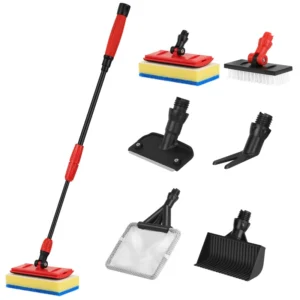
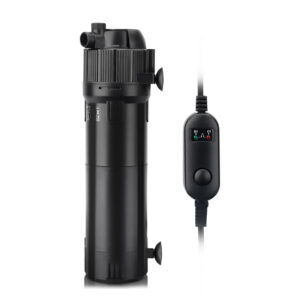
Leave a comment